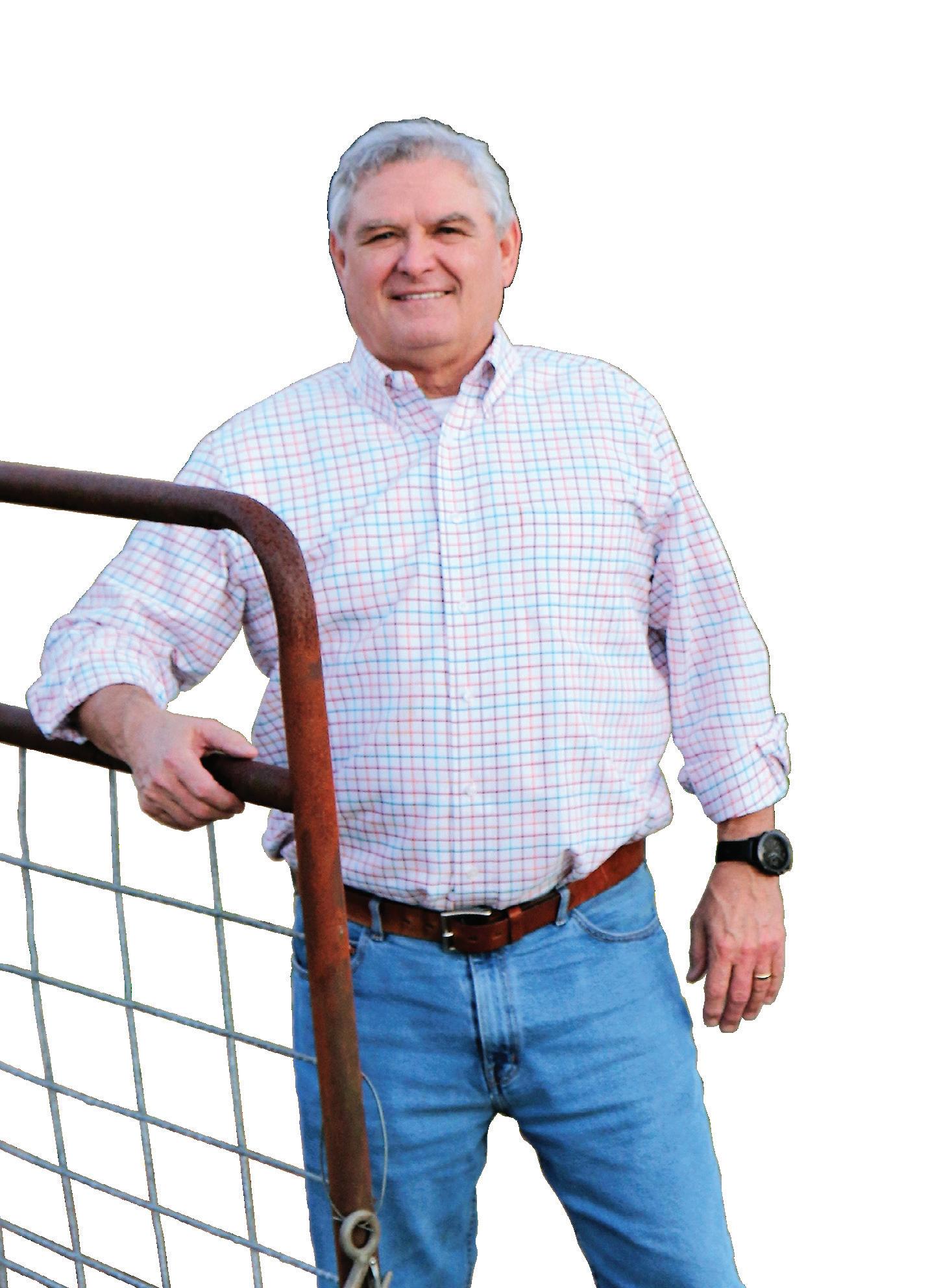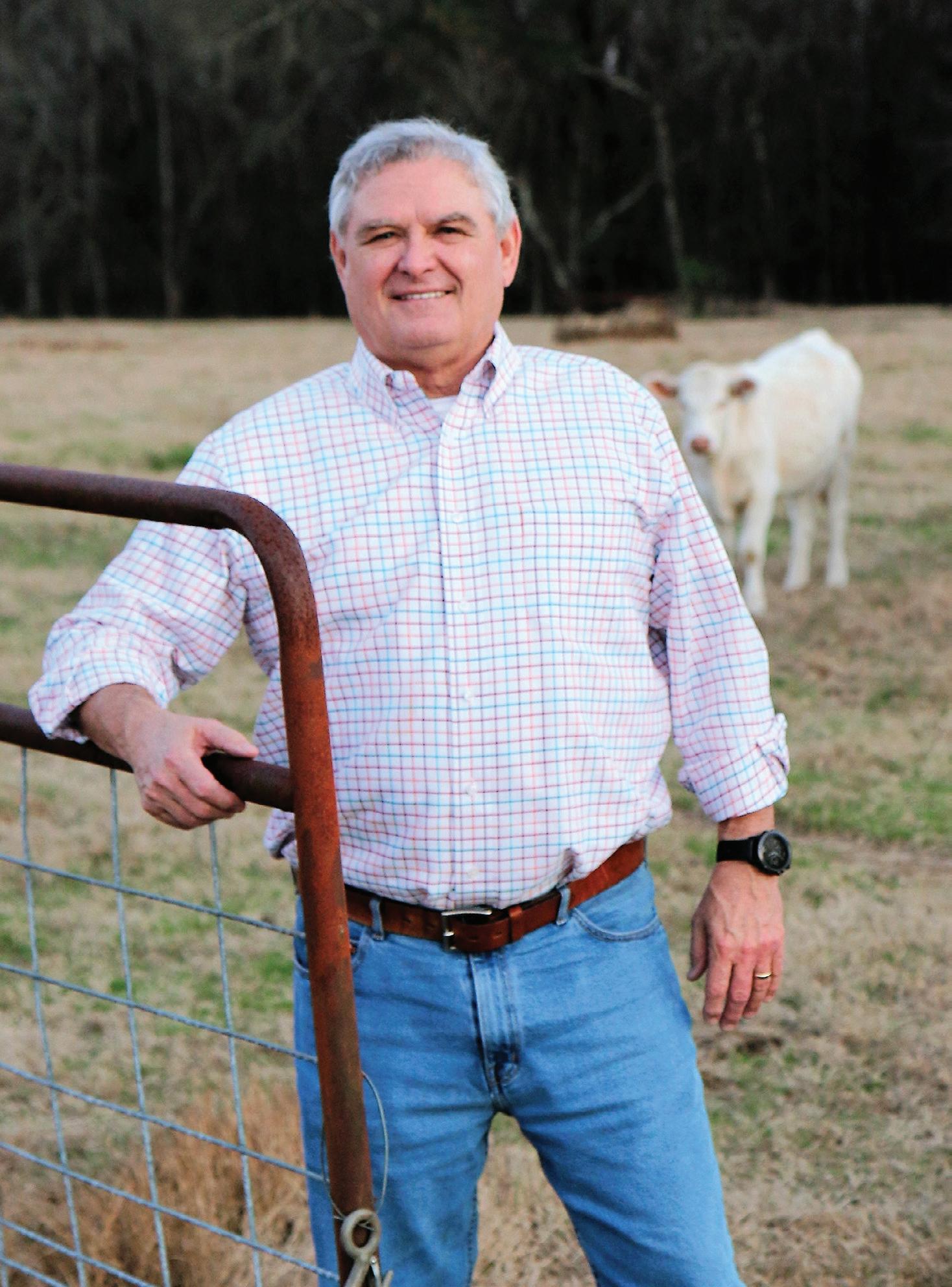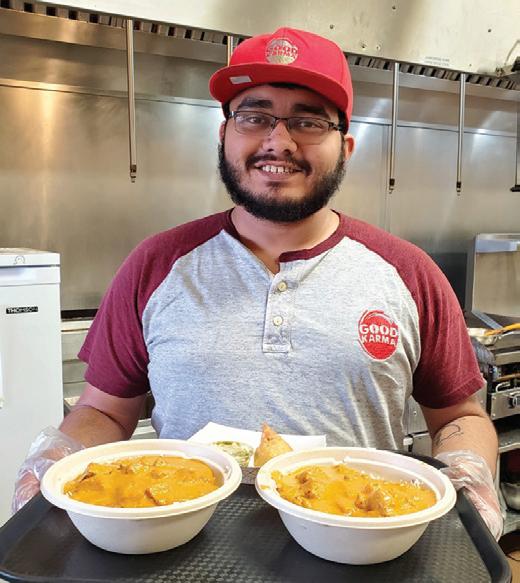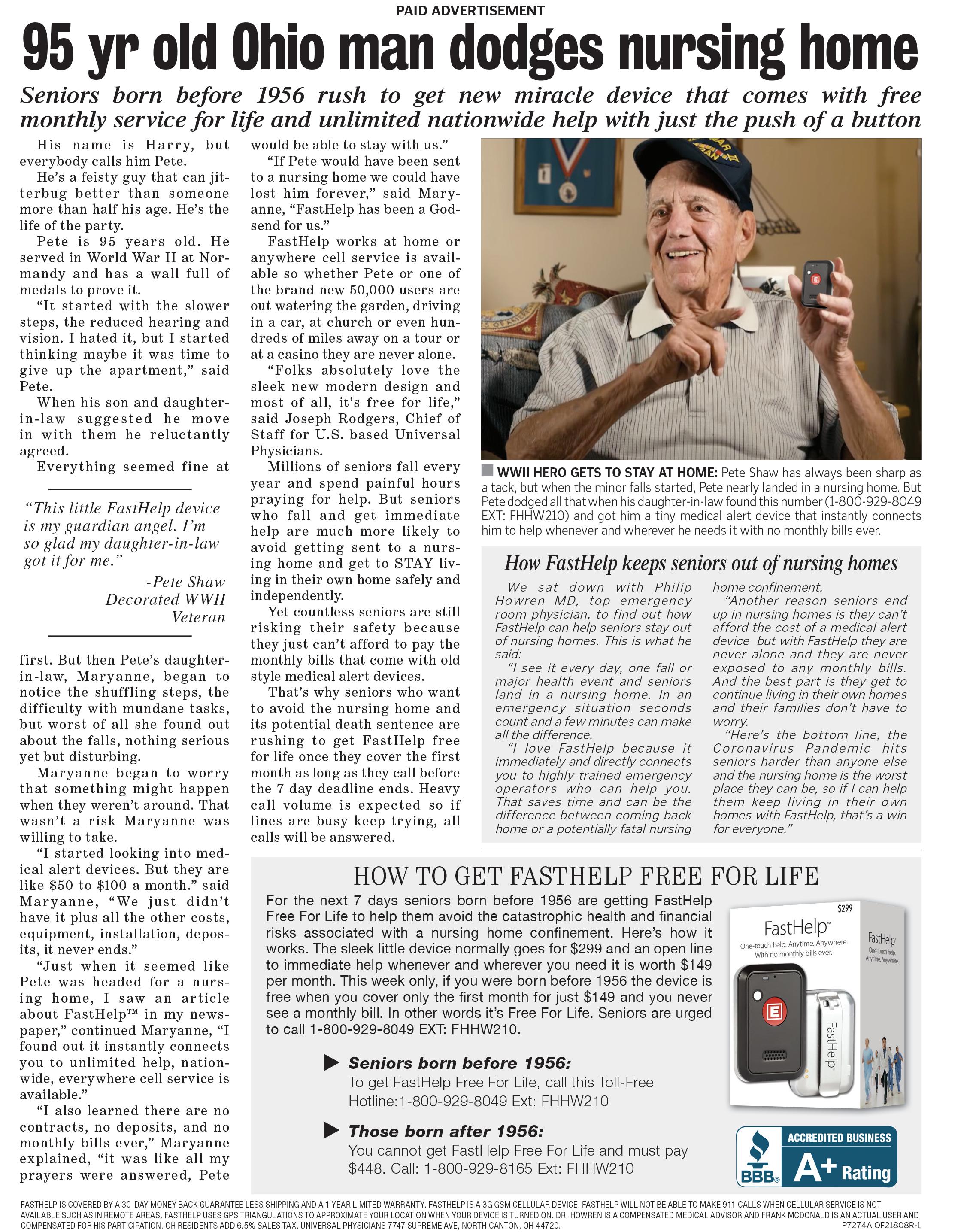
15 minute read
Promoting agriculture
Promoting Alabama agriculture
Rick Pate, who was elected Alabama’s Commissioner of Agriculture and Industries in 2018, grew up on his family’s beef and poultry farm in Lowndes County. Graduating in 1978 from Auburn Univer sity where he studied ornamental horticulture, he started his own landscaping business, Pate Landscape Co., in 1982. As if running a business wasn’t enough, he jumped into politics, first running and being elected to the town council and later mayor of Lowndesboro, where he presided over a number of municipal improvements in cluding expansion of the water system and new sidewalks. We talked to Pate about how his background prepared him for heading up one of the state’s seven constitutional offices. –Lenore Vickrey
Why did you decide to run for statewide office?
Our parents taught us by example the importance of improving the conditions around us whether in our community, church or industry. I was at a point in my life where I was ready for a new challenge. I was approached by a farmer to run for Commissioner of Agriculture. I spoke with then Commissioner, John McMillan, and he encouraged me to run. I saw this as an opportunity to use the experience I’ve gained over the years, as a farmer, agribusiness owner and community leader to contribute to Alabama agriculture.


What’s your typical day like?
One of the most exciting aspects is that no one day is the same. I can hon estly say I look forward to coming to work every day. I believe we are doing important work to protect o u r f o o d supply, animal health, environment and fair commerce, while promoting Alabama-grown food and products.
My schedule changed dramatically with the onset of the coro navirus pandemic. I had spent half my time traveling around the state meeting with farmers and agribusiness groups promoting Alabama agriculture and sharing our roles in protecting consum ers and farmers.
In the first few weeks of the coronavirus, we were held respon sible by the U.S. Department of Homeland Security for protecting “the food supply chain” in Alabama. They declared agriculture and its employees as critical infrastructure and essential services.’ At the time, restrictions on travel were proposed and business es ordered to close, but we believe we navigated those challenges well.
We delivered face masks and hand sanitizer to all poultry and catfish processing plants for their employees to use at home, to slow the spread of the virus. We also worked with Cal-Maine Foods, Inc. and the Alabama Trucking Association to help distrib ute over 280,000 eggs to Feeding America food banks and other organizations across the state. We are currently working with the governor to distribute CARES Act money equitably back to Ala bama agriculture.
What has been the biggest challenge for Alabama’s agriculture industry during the current pandemic?
The ”stay at home” orders created challenges for us as we worked to keep the food supply chain operational. We saw cattle prices plummet while availability and prices of beef in grocery stores fluctuated wildly. We dealt with reduced processing capacity in our poultry industry as their facilities began to slow down due to virus outbreaks.
We continue to assure our fellow citizens that Alabama’s food supply is abundant, safe and sustainable. We will get through this together.
What’s your idea of an ideal supper with all-Alabama grown products?
It would be between a ribeye steak or fried Alabama-raised catfish. My favorite Alabama-grown fruits are fresh peaches, watermelon and strawberries. My favorite Alabama-grown vegetables include fried okra, tomatoes (with a little salt, pepper and mayon naise), sweet potatoes and greens. A must-have for dinner is my wife’s cornbread with either Milo’s or Red Diamond tea to drink. For dessert, I’d pick blueberry pie with Blue Bell ice cream with a few Priester’s or Underwood pecans sprinkled on top.
You’ve said that by 2050 farmers will have to double food production to meet the needs of the world. How is Alabama poised to do its part?
The abundance of natural resources in Alabama uniquely positions us to continue to increase food production. We are fortunate to have a long growing season, lots of rain and a wide variety of soils. With advancements in technology, Alabama farmers keep making production gains every year while also reducing impacts on the environment. We are growing more on less land and using less chemicals than ever before. Alabama is in a position to more than meet the needs of a growing population.

Mom’s home cooking was inspiration for Indian restaurant

By Jack West

With the global pandemic continuing to require Alabamians said that his mother’s home-cooking was the inspiration for Good to forgo sit-down restaurants in favor of takeout, one Au Karma. burn restaurant is continuing to give people good energy “I remember eating this food at home, and I remember taking it and even better food, one bowl of rice at a time. to some of my friends in school when my mom would make a little
First started as a food truck on Auburn University’s campus, extra,” he says. “Just to see them try my mom’s cooking for the first Good Karma is a local Indian restaurant that has always focused time and how much they enjoyed it, I wanted people to be able to more on takeout food than a dine-in experience. experience that.”
That focus, coupled with good food and empathetic business The restaurant mainly serves rice bowls and naan wraps with ei practices, has helped Good Karma retain a customer base in a col ther chicken, lamb, paneer or a daily vegan option like chickpeas or lege town that, at least for the last few months, potatoes. Those are then topped with an array has been diminished. of sauce choices like tikka masala or curry. And
Sunny Merchant, founder and president of finally, every dish can be made either “regular,” Good Karma, started the business nearly a year “spicy,” “extra spicy” or “burn off my tastebuds.” ago as a recent college graduate. His parents also That last option, by the way, may seem like a own a food truck in Auburn, but that was the joke, but it is also a promise. extent of experience he’d had with the restaurant With options like lamb and curry, one of the business. biggest questions surrounding Good Karma’s
“I took exactly zero business classes in col success is whether it has come despite the lack lege,” Merchant says. “I know I’ve made a lot of of Indian food in the modern Alabamian diet, mistakes in a lot of areas of the business, opera or because of it. Plenty of kids growing up in tions-wise. I didn’t know how to talk to certain Alabama go to Mexican restaurants for chips people, or I didn’t know what a good price was and salsa or Chinese restaurants for chow mein for certain things.” and orange chicken, but Indian food has never
Merchant said that while starting the business Sunny Merchant holds a tray of really been a part of the Southern palette. often seemed overwhelming, having parents in chicken curry, a restaurant favorite. Merchant said he wanted to create more di the food service industry certainly helped. verse dining options.
“It’s definitely one of the most exciting and most stressful things “A lot of people don’t really venture too much out of Auburn or I’ve done in my life so far,” Merchant says. “There is so much to get Alabama or the United States, and so they don’t always have the op done, so many moving parts. It was a very overwhelming experi portunity to try something that they’ve never even seen or heard of ence, and I’ve very thankful that I had my parents to help guide before,” he says. “In a word, pluralism. It’s the idea that we as people me and encourage me on the days that I was a little bit too over should be able to experience a wide variety of experiences. It would whelmed.” be a shame for people to have the opportunity to try something new
Merchant, who has lived in Auburn since he was in fourth grade, Continued on Page 30

Social Security terms, in plain language
Some of the terms and acronyms people use when they talk about Social Security can be a little confusing. We’re here to help you understand all you need to know.
We strive to explain your benefits using easy-to-understand, plain language. The Plain Writing Act of 2010 requires federal agencies to communicate clearly in a way “the public can understand and use.” This can be particularly challenging when talking about complicated programs like Social Security, Supplemental Security Income, and Medicare. If there’s a technical term or acronym that you don’t know, you can easily find the meaning in our online glossary at ssa.gov/agency/glossary.
Everyone uses shorter versions of words nowadays. We do, too. Social Security’s acronyms function as shorthand in conversations about our programs and services.
Kylle’ McKinney, SSA Public Affairs Specialist, can be reached by email at kylle.mckinney@ssa.gov.
If you’re nearing retirement, you may want to know what PIA (primary insurance amount), FRA (full retirement age), and DRCs (delayed retirement credits) mean. These terms describe your benefit amount — based on when you decide to take it. If you take your retirement benefit at FRA, you’ll receive the full PIA (amount payable for a retired worker who starts benefits at full retirement age). So, FRA is an age and PIA is an amount.
Once you receive benefits, you get a COLA most years. A COLA is a Cost-of-Living Adjustment, and that will usually mean a little extra money in your monthly benefit.
What about DRCs? Delayed retirement credits are the incremental increases added to the PIA if you delay taking retirement benefits beyond your full retirement age. If you wait to begin benefits beyond FRA — say, at age 68 or even 70 — your benefit increases.
If one of those terms or acronyms comes up in conversation, you can be the one to supply the definition using our online glossary. Sometimes learning the terminology can deepen your understanding of how Social Security works for you.
September crossword by Myles Mellor
Across 1 Anniston civil rights monument, 2 words 8 Fort Conde ___ in Mobile 9 Origin point of the marches supporting the Voting Rights Act 11 Corn holder 12 Cabin builder’s material 13 In 2019, The Tide had 10 players taken in this NFL selection process 15 Green color 17 Caught off base 18 Alabama ___ Cornmeal 19 Boll weevil, for one 22 Car club, abbr. 23 Dawn time 25 Interlinked natural environments 29 Alabama neighbor, abbr. 31 Zero 32 Former Auburn player who joined the Patriots this year 33 2019 NFL draft pick from Auburn Tigers, Jamel ____ 35 Large coffee pot 37 Crimson Tide LB, ___ Davis 38 Beautiful blue bird, common in Alabama, Indigo ____
Down 1 Southern food favorite, 2 words 2 Ending for west or east 3 State Park northeast of Fort Payne 4 It could be Japanese or Brown Top 5 Picture 6 Gracefully refined 7 Polite form of address to the boss 10 Frequent tattoo letters 14 ___ Sullivan Macy: Helen Keller’s teacher 16 Auburn coach inducted into the College Football Hall of
Fame in 2005 19 Dark horse 20 Alabama’s ____ shore, including Spanish Fort, Daphne and Fairhope 21 Sounds you might hear in Cathedral Caverns State Park 22 Stock wood 24 Madame, for short 26 Weariness 27 28 30 32 34 36 Detroit locale, abbr. Buggy in Alabama is ___ for a shopping cart Large white bird found in Alabama waters Pen part Radio type Nurse (abbr.)

Answers on Page 45

Hookworm in dogs on the increase

You’ve probably heard of MRSA, the bacteria that can cause staph infections that are difficult to treat because of resistance to some antibiotics. Now, researchers have found hookworms in dogs that are reOne of the best ways to prevent hookworm in sistant to multiple your pet is to keep the yard clean. drugs.
Scientists at Kaplan Laboratory at the University of Georgia came to the conclusion of a multidrug-resistant hookworm after 2 years of study. We have been seeing this phenomenon in our own clinic! Many pets that have been treated at home with over the counter dewormers are still showing positive for hookworm parasite eggs from our in-house fecal testing.
Hookworm is the most common intestinal parasite of dogs in this country, and the numbers are increasing. A recent study of over 39 million fecal samples from 2012–2018 showed an overall increase of 47%. They are fairly small parasites, about 1/3-inch to ½-inch long and not easily visible by the naked eye.
Hookworm in dogs can cause bloody diarrhea, malnutrition, heart issues, and death. Hookworm eggs get into the soil, become larvae, and live for many weeks. Alarmingly, they can infect humans by penetrating the skin when walking barefooted!
So what to do?
The MOST important thing is the simplest: pick up after your dog, every time! Make sure to do fecal testing yearly. It is best to bring a fresh stool sample. If one of your pets tests positive, start treatment right away, and follow through until fecal samples are clean.
Common drugs used for hookworms are Strongid, Panacur, and Interceptor. The good news is, so far they haven’t found hookworms which are resistant to all three drugs, but which are resistant to 2 of the 3 drugs.
It is interesting that the authors of another study believe the origin of the multidrug resistant hookworm may have started from Florida greyhound breeding facilities, where dogs are raised for the racing industry. They believe overcrowding and overuse of anthelmintic (anti-parasite) drugs may have been the cause.
In my experience, some breeders tend to throw a dose of every dewormer to the puppies, instead of taking environmental control measures like clean facilities and fewer animals on the premises. If possible, rescue, don’t buy! Or, if you feel compelled to buy, then buy from a breeder where the facilities are meticulously cleaned and the kennel is not overpopulated.
Goutam Mukherjee, DVM, MS, Ph.D. (Dr. G) has been a veterinarian for more than 30 years. He works at his home as a holistic veterinarian and is a member of North Alabama Electric Cooperative. Send pet-related questions to drg.vet@gmail.com. and just never do it.”
Trying something new, according to Merchant, is a great way to get people talking to each other and invested in the community around them.
Generating positive energy
“I wanted to do something to bring people together, and I know that good food makes coming together as people very easy,” he says. “My thought has always been that if I can bring together enough people with good food, it might as well be food that they’ve never tried before.
“Our name is Good Karma, and we really want to live up to our name. We really want to put out as much positive energy as we can.”
In practice, that takes the form of a small corkboard covered with pins in front of the register in the restaurant. A sign next to it cheer fully designates the corkboard as a community board. The idea is that anyone can walk into the restaurant, pull a pin off the board, hand it to the person behind the register and receive a rice bowl and a drink for free. No questions asked.
“It’s basically for anyone who is hungry and who doesn’t want to, or can’t afford to, pay for their food,” Merchant says. “It’s for people who are down on their luck as well as people who have forgotten their wallets at home and anyone in between.”
Others can choose to sponsor a pin and, in a sense, get some good karma of their own. For $10, anyone can add another pin to the corkboard and ensure that someone else gets a free meal.
Like other business owners, Merchant is rethinking how he inter acts with his customers — his family — because of the uncertainty about when social distancing restrictions may end and what fall will look like on Auburn’s campus.
“Luckily, our business model was designed as more of takeout model already,” Merchant says. “It did hurt us to close our dining room. We ended up missing out on a lot of customer interactions which is one of my favorite parts about the restaurant.
“We are looking at different events around town, everything from student housing complexes to family neighborhoods to different businesses. We would take the truck out to those places and still do our best to serve the community.”

Good Karma
1409 S. College St., Suite 118 Auburn, AL augoodkarma.com 334-246-3144 Hours: 11 a.m.-9 p.m., Monday-Saturday; closed Sunday
Auburn

CALL FOR ENTRIES Alabama Rural Electric Association’s

11 th Quilt Competition Our 2021 theme is: First responders
Mail, or E-mail form below for your entry package. Deadline to submit quilt square is January 29, 2021.
Linda Partin AREA 340 TechnaCenter Drive Montgomery, AL 36117



